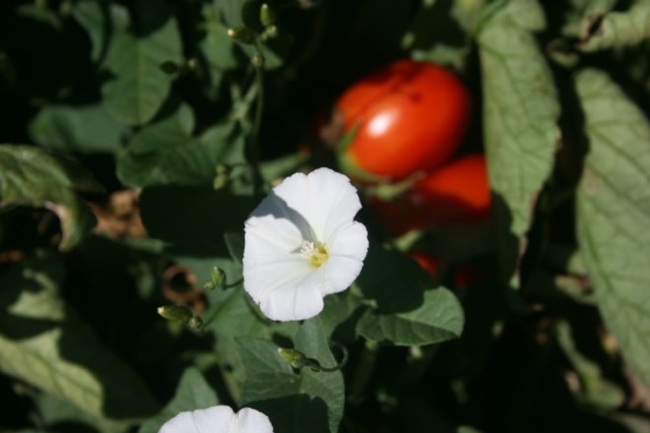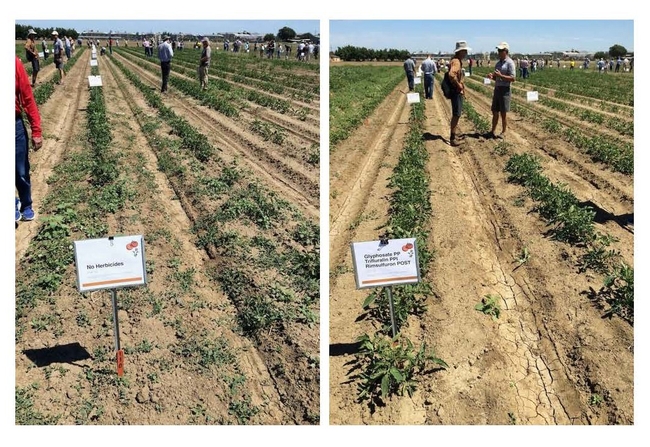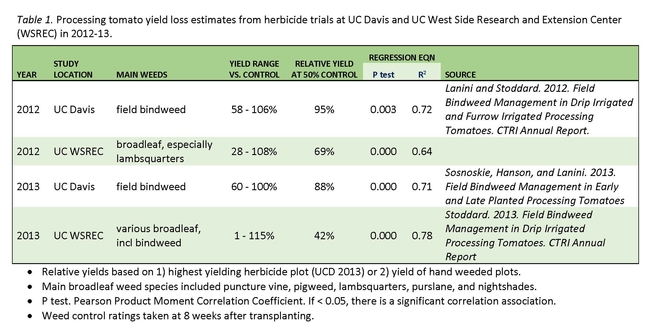August 7, 2021

Bindweed is a headache not only for its persistent and pernicious growth habit and ability to reduce tomato yields, but also because it can physically stop a processing tomato harvester in the field. Vigorously growing vines can become entangled around the shaker and conveyor belts, requiring the equipment operator to shut down and manually clear out the foliage.
Several years ago, myself and other UC researchers conducted herbicide trials evaluating field bindweed control -- with marginal success. In a given year and location, most of the registered herbicides in tomatoes gave only temporary suppression – about 40 – 80% bindweed control at 8 weeks after transplanting. Best results were observed where herbicides were stacked: trifluralin (Treflan) pre-plant incorporated followed by rimsulfuron (Matrix) post. Glyphosate helped in situations where the bindweed emerged early and could be applied before transplanting (Figure 2).

Earlier this year, I was asked to summarize the effects of weeds on processing tomato yield. This made me go back and look at this work, but with a slightly different emphasis: impact of weed control (or really, lack of weed control) on yield. To increase the size of my dataset, I also included data from trials done at UC Davis. Where I had data for both yield and weed control in good, replicated trials, I performed a regression analysis comparing % weed control and % relative yield (relative yields remove the year-to-year and location variability). In the end, I used 4 trials from 2012-13 (Table 1).
Surprisingly, these data suggested that where bindweed dominated, it did not have a big impact on processing tomato yield. Even with just 50% control 8 weeks after transplanting, potential yield was 88-95%. This may have occurred because bindweed does not shade out the tomato canopy nearly as much as some of the common annual weeds. However, when tall broadleaf weeds dominated, such as pigweed, nightshades, and lambsquarters, yields dropped rapidly. I had some plots with a 99% yield drop if these weeds were allowed to grow all season. In this situation, the weeds towered over the tomato canopy.

Literature cited:
Van Wychen L (2019). 2019 Survey of the most common and troublesome weeds in broadleaf crops, fruits & vegetables in the United States and Canada. Weed Science Society of America National Weed Survey Dataset. Available: https://wssa.net/wp-content/uploads/2019-Weed-Survey_broadleaf-crops.xlsx
